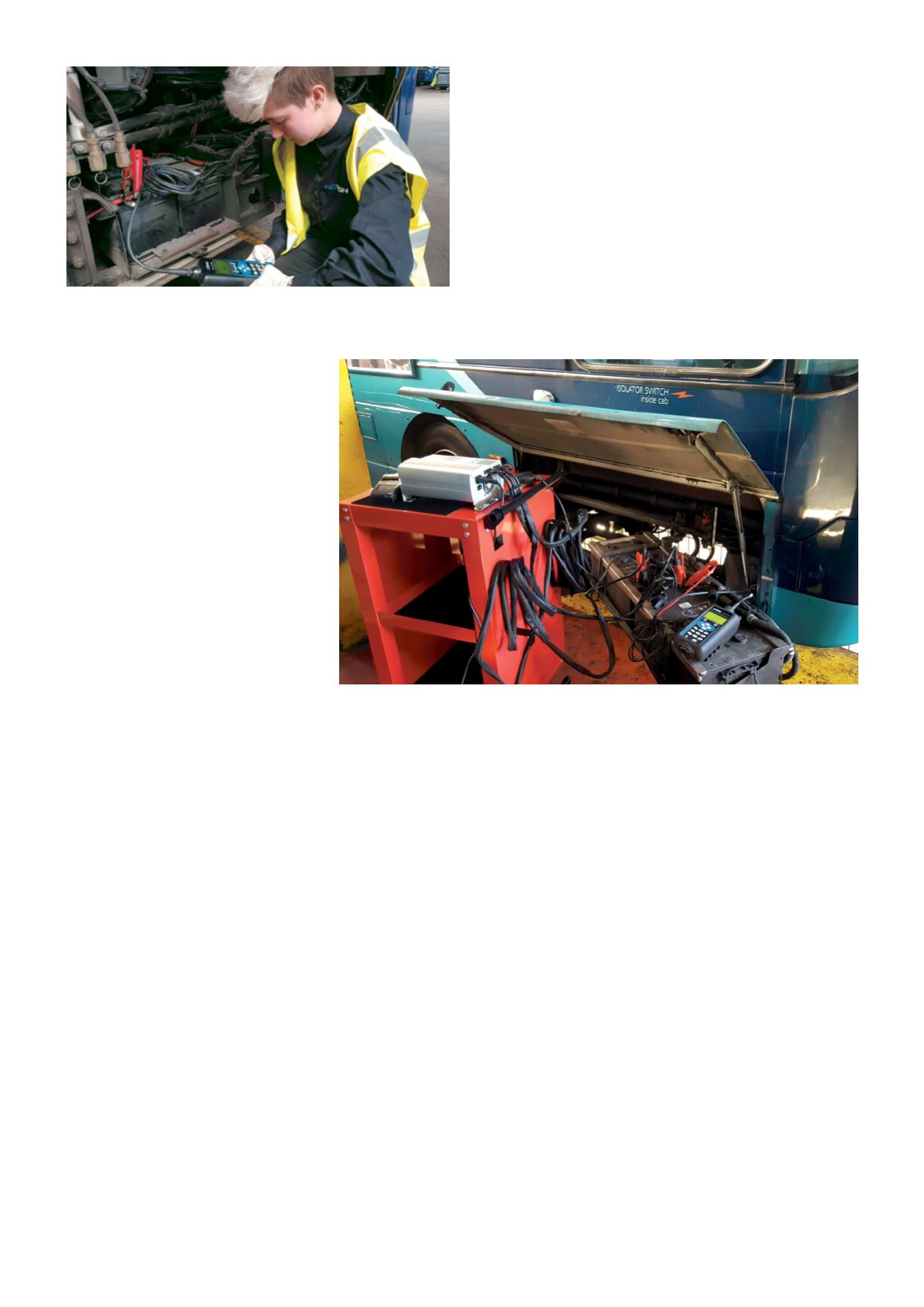
 www.truckandtrack.com
www.truckandtrack.com
Winter 2018
Truck and Track
37
BATTERY MANAGEMENT
start defects in any year. A conservative estimate would be £150 for
each breakdown, equating to a cost of £45,000. Add the cost of a set
of batteries, which can cost up to £300, andwe are then looking at a
yearly maintenance bill of over £130,000.”
Ken Clark says: “Regular monitoring,
testing and charging within a battery
management
programme
should
be
essential at all times of the year to
considerably reduce avoidable charges
and maximise a battery’s performance and
lifespan. Workshops have the opportunity
to knock some big costs off their budget
and use the best battery service and
maintenance technology available.”
A batterymanagement programme
ensures that:
■■
Vehicles in each fleet get to their
destination on time, every time
and
batteries are maintained to optimum
levels, ensuring that avoidable costs are
significantly reduced
■■
Each workshop is given training
and the expertise
to maximise fault
diagnosis, increase productivity and
customer service
■■
A full auditable record is available
to monitor and track a
fleet’s battery performance
■■
Batteries are tested pro-actively
, at the point of service and
routine inspection
■■
Imbalanced batteries are identified
and charged accordingly
■■
Defective batteries are identified
and replaced before they
affect vehicle reliability
■■
Return-on-investment can be proved
95% of those surveyed admitted they do not test their batteries
when receiving them into stock, even though batteries could have
been sitting for long periods of time.
Ken Clark says: “Without testing a battery when it comes into the
workshop, you don’t know the quality of the product that you are
buying. Voltage is the key criteria – we know that batteries are often
not delivered to the right voltage and that this means that you have
a problem before you even fit the battery and the risk of additional
issues developing is accelerated.
“You run the risk of sulphation and stratification, where the acid
level is imbalanced, and this causes irreversible damage. As a quick
measurement, batteries should be received with a minimum of
12.6V and above and the should not be 10% below their rated
capacity on delivery.”
100% of the workshops surveyed advised that they do not know
whether the batteries they purchase perform to their correct
standard and 90% only test batteries if there is a suspected fault
with the battery or vehicle. Workshops are open to the risk of
premature defects and missed opportunities.
80% of the survey group use a conductance type battery tester but
a worrying 20% are still using a traditional load tester (known in
the trade as toasters because they heat up the battery and create a
significant loading which runs the risk of the battery igniting).
Ken Clark says: “Load testers are not an accurate means of testing
the performance of the battery. The health and safety issues in
using this equipment is a major consideration that shouldn’t be
underestimated – let alone the fact that it isn’t an accurate means
of testing.”
Balanced Charging
65% of the surveyed visitors did not know what the term balanced
charging meant.
Ken Clark says: “Battery balancing is a critical factor in keeping
commercial vehicles on the road and helping vehicle and fleet
owners avoid unnecessary downtime and costs.
“An imbalanced battery is likely to have a reduced lifespan of up to
50%, which results in premature and avoidable early replacement
costs. In any 24v vehicle system, having imbalanced batteries – a
bit like an irregular heart beat – is the certain route to roadside
defects and rising avoidable costs.”
Within six-months of operation, a battery set can be out of balance
and, without regular maintenance and checks, fleet owners will see
few obvious signs in their vehicles until they experience a road-side
non-start or battery failure.
Over time, one battery will have a greater charge acceptance than
the other and, in turn, the other battery will be short-changed in
the charge process. If this goes on unchecked, without correct
maintenance, the deterioration will continue fast.
Ken Clark and his teambelieve that the impact of battery imbalance
and poor maintenance can contribute up to 20% of a workshop’s
annual battery-related costs.
The long-term implications associated with Battery
Imbalance:
■■
Premature failure
■■
Roadside non-starts
■■
Recovery costs
■■
Customer complaints
■■
Compensation costs
■■
Non-delivery of goods
For more information on Rotronics and the battery management
programmes, go to
www.rotronicsbms.com and call Ken Clark on
0121 526 8185. You can also email
info@rotronicsbms.com


















